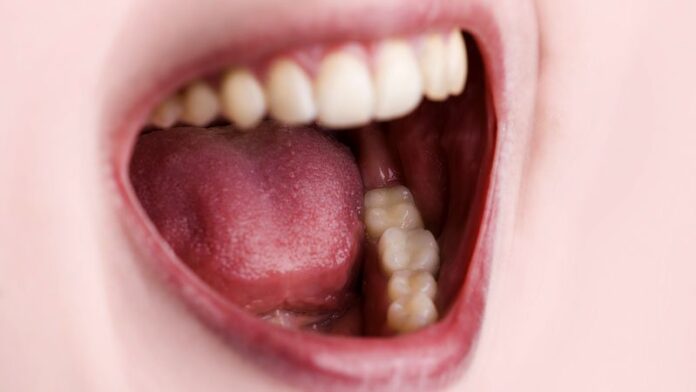[ad_1]
Editor’s note: Find the latest COVID-19 news and guidance in Medscape’s Coronavirus Resource Center.
SARS-CoV-2’s infection sites are well known in the airways and other parts of the body, but new research indicates that the virus also infects mouth cells.
The findings by Ni Huang, PhD, from the Wellcome Sanger Institute in Cambridge, United Kingdom, and Paola Perez, PhD, from the National Institutes of Health (NIH), and colleagues, published online in Nature Medicine on Thursday, may help explain the taste and smell loss, dry mouth, and blistering some patients experience, the authors say.
Previous studies have suggested that testing saliva is nearly as accurate as deep nasal swabbing in diagnosing COVID-19, but little was known about where the virus in the saliva comes from.
The scientists say the mouth should be added to the airways in addition to the digestive system, blood vessels, and kidneys as infection sites for COVID-19.
Table of Contents
Saliva Is Infectious
“This is really the first direct evidence that we have that SARS-CoV-2 can not only infect and replicate in cells of the mouth but the fluid generated by the mouth is also infectious,” coauthor Blake Warner, DDS, PhD, MPH, from the NIH’s National Institute of Dental and Craniofacial Research, told Medscape Medical News.
Warner said that the international team of researchers discovered that the salivary glands were working essentially as a virus production factory.
“This is the prime environment for a SARS-CoV-2,” he said. “The salivary glands are not only good at making proteins, they are also good at secreting fluids. Those fluids have the ability to transfer the virus to other people but also spread it to other parts of the body.”
The findings also help confirm the necessity for mask-wearing, proper personal protective equipment, and social distancing, Warner noted.
He said it also may have implications for testing.
“We need to have folks who are tested routinely, prospectively in the nasal cavity and in saliva until they get infection, especially if they are a high-risk cohort,” he said. “Only then will we understand whether this early infection is happening first in the mouth or first in the nose and then follow them forward.
“Part of our data suggest that you might miss some folks if you’re only testing one site,” he added.
“Rabbit Hole” Tests Led to Discovery
Warner described the “rabbit hole” experiments that led to the discovery. First they used saliva from testing facilities and donated tissue from autopsies of COVID-19 patients to prove that the virus was present and could replicate in the salivary glands.
Then they used tissue from acutely infected live donors and were able to confirm that the salivary glands and mucosae could support both infection and replication.
Researchers then tested the saliva from a small group of people with asymptomatic COVID-19 to see if it could infect other healthy cells in a lab dish and found that it could.
Finally, to explore the link between oral symptoms and virus in saliva, the researchers collected saliva from a separate group of 35 NIH volunteers who had mild or asymptomatic COVID-19.
Of the 27 people who had symptoms, those with virus in their saliva were more likely to report loss of taste and smell, suggesting that oral infection might explain oral symptoms of COVID-19.
Understanding of the mouth’s involvement in COVID-19 infection can help lead to answers on reducing transmission within and outside of the body, the team concludes.
William Schaffner, MD, an infectious disease specialist at Vanderbilt University School of Medicine in Nashville, Tennessee, told Medscape Medical News that he found the series of experiments “fascinating.”
The paper makes it clear that “an unappreciated area of the body may play a role in COVID infections,” he said, and it also helps answer the puzzling question of why many COVID-19 patients lose their sense of taste.
“I think for the average person I don’t think it means all that much except you don’t want to kiss someone who’s got COVID,” he said.
But Schaffner says he’s intrigued by the paper’s implications regarding how the virus is transmitted — and even more concerned about young crowds flocking to southern shores.
“Now we have all these people on spring break,” he said. “They’re not just staying on the beaches, they’re not just going to the bars, some will have romantic relationships and this may be yet another way this virus could go from one person to another very efficiently.”
Marcia Frellick is a freelance journalist based in Chicago. She has previously written for the Chicago Tribune, Science News, and Nurse.com, and was an editor at the Chicago Sun-Times, the Cincinnati Enquirer, and the St. Cloud (Minnesota) Times. Follow her on Twitter at @mfrellick.
For more news, follow Medscape on Facebook, Twitter, Instagram, and YouTube.
[ad_2]
Source link












